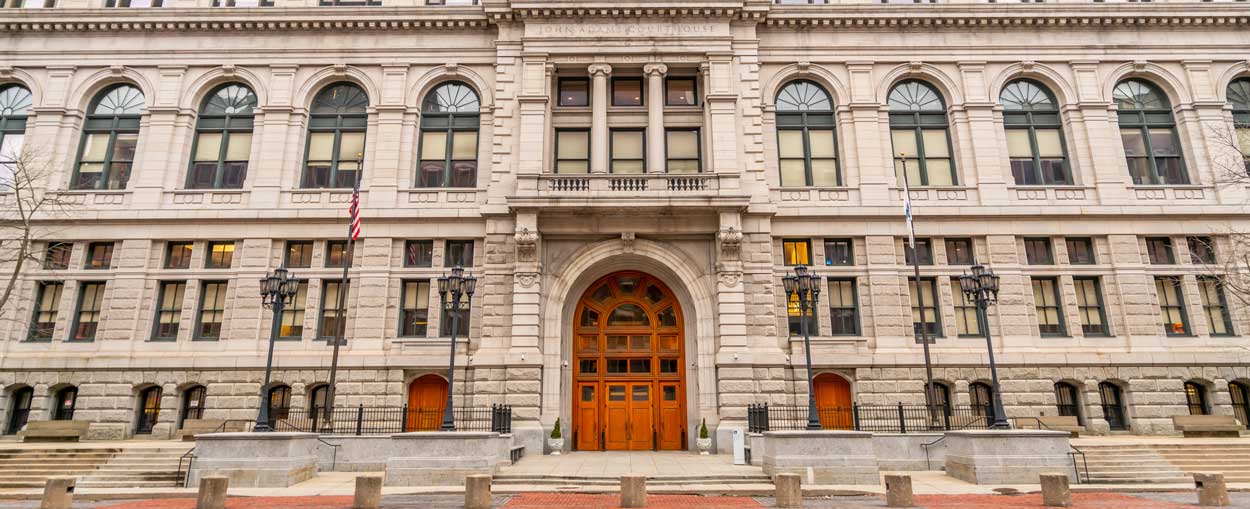
What to Expect
Although each case is different and there is no one “set in stone” approach, the following is an example of how the attorneys at SUGARMAN investigate and litigate personal injury cases from start to finish.

The First Contact And Initial Meeting
Most of our clients first contact us by telephone or e-mail. If we believe that you have a potential case that we can assist you with, you will speak with one of our partners. We will ask a few questions concerning your potential claim. We ask questions designed to learn whether the next step, an in-person meeting would be helpful. For example, we limit our practice to Massachusetts so we’ll make sure that your case, if we represent you, can be filed in a Massachusetts court. Also, we make an initial assessment whether the statute of limitations (the time limit for filing a case) has run and whether the type of case is within one of our personal injury practice areas. You cannot adequately represent someone if you don’t know everything you need to know about them. The initial meeting will begin the process by which we learn about you, your life and what happened to you.
Be prepared to relate your past medical history, including prior accidents, injuries or diseases, the identities of all your treating doctors and all hospitals or healthcare facilities where you received treatment. What has happened in the past may not appear relevant to you, but it could impact the result of your case. Our inquiry into the events surrounding your case is, frankly, exhaustive. We need to know everything that happened in the order in which events took place. Who, what, when, where how and why is the only approach we take. Conversations had with treating doctors, nurses or technicians are important and we need to know about them. Before the initial meeting ends we may have you sign medical authorizations so that we can obtain your medical records. Our firm considers all client medical records private and confidential and the firm is HIPPA compliant.

Our Investigation
Depending on the case, there are a variety of steps our lawyers may need to conduct in order to determine whether or not there is a viable claim that you can pursue. Our attorneys are relentlessly thorough in our approach to investigating potential cases – if there are any obstacles to bringing or pursuing a claim, it is best to know them at the beginning so they can be analyzed and discussed. Our investigation can involve detailed legal research and analysis, a review of all the relevant medical records, inspecting the accident site, hiring a medical expert to review medical records or having an expert inspect and analyze a defective product.
At SUGARMAN, all of the medical record reviews are initially conducted by the lawyers you met with at the initial meeting. Unlike most other firms, it is our attorneys, not outside services or in-house legal nurses, who determine whether you have a case. While that determination may eventually require a subsequent review by a medical expert, we believe that such an important decision must be made by the people who will work on your case and eventually try it to a jury. Decades of experience have taught us to know and understand the “language” of medicine . We know what to look for and where to find it in a medical record.
There are two crucially important by-products of having your own lawyers conduct an initial investigation. First, when we speak to experts about what happened to you we’ll know what we’re talking about and we’ll be able to focus an expert’s attention on what is important. Secondly, it is the first step in acquiring complete command of the facts of your personal injury case. We believe that without a complete command of the facts, you cannot adequately represent your client in the courtroom. It is our job to explain very sophisticated and complex concepts to a jury in a very straightforward and understandable way. That job begins with knowing everything that happened and why.
In some cases, we will be required by law to provide certain notices to the potential defendant(s) before a lawsuit can be filed. For example, Massachusetts law now requires lawyers to send a notice letter to medical providers prior to the initiation of a medical malpractice case.
Whether at the initial meeting or after we have completed our investigation, you and SUGARMAN will need to enter into a fee agreement. We represent our clients on what is known as a contingent fee basis. That simply means that you will only owe our firm a fee if our services result in a monetary recovery for your injuries. In most personal injury cases, the usual fee is one third of any amount recovered. Medical malpractice cases are different. Contingent fees in medical malpractice cases are regulated by statute in Massachusetts. The law requires a sliding scale basis: as the amount of the recovery increases, the percentage of the fee that a lawyer can charge is lower. Every detail of the fee arrangement will be fully explained to you before you are asked to sign it and you will receive a copy of the fee agreement for your records.

The Complaint And Initial Steps
A personal injury lawsuit begins with you, the plaintiff, filing a Complaint in court. A Complaint is a legal document which sets out what happened to you as a result of the defendant’s negligence and claims that you are legally entitled to receive damages for those injuries caused by the negligence. Your spouse and children also may have claims against the defendant as a result of your injuries. A deputy sheriff serves the Complaint on the defendant. The service of the Complaint initiates the defendant’s obligation to defend the lawsuit by filing an Answer to it. In the Answer, the defendant will respond to the negligence claims in the Complaint and assert any legal defenses that may be available.
In a medical malpractice, the Court schedules a Medical Malpractice Tribunal to evaluate the legal sufficiency of the Plaintiff’s claims. A Tribunal is a three-person board composed of a judge, a lawyer and a physician or other health care provider in the same specialty as the defendant. At the Tribunal, SUGARMAN’s lawyers will present an Offer of Proof describing the facts of the case and submitting our expert’s report detailing the departures from the standard of care and their causal connection with your injuries. If the Tribunal finds in Plaintiff’s favor, the case may proceed without having to post a bond. If not, a bond must be posted before the Plaintiff is allowed to continue.

The Discovery
The next step in a personal injury case is the process known as discovery. Discovery allows each side to learn about their opponent’s case prior to trial. We will send written interrogatories or questions to the defendant. The defendant is required to provide answers which will give us information about what the defendant says happened. We also will request any written documents or other evidence that may be relevant to proving your case. You can expect that the defendants in your case will also send written interrogatories and document requests to us, on your behalf, as part of the discovery process.
These discovery tools allow us to be prepared for the most important part of discovery, depositions. Depositions are a means of receiving sworn testimony from parties and witnesses who have information about what happened in the case. These witnesses may have been present when the negligence or medical malpractice occurred or have knowledge pertaining to the design of a defective product or your injuries. The defendant is always deposed, as is the plaintiff. The defendant’s deposition allows us to hear his or her explanation for what happened and allows us to prepare for the defendant’s testimony at trial. When your deposition is scheduled we will prepare you for what to expect and be there with you while you are being questioned. Depositions allow the lawyers to learn all about you and, equally important, determine what kind of impression you will make before a jury.
The court sets the time period in which discovery needs to be conducted. It varies depending on the type of case with medical malpractice and defective product cases having a much lengthier discovery period than a case involving a simple car accident. Once discovery is completed, the next step in your case is receiving a trial date from the court. The trial date puts the case on a schedule for final preparation to go before the jury.

Trial – The Realities of a Personal Injury Case
There are cases that resolve prior to a trial, either through negotiations or with the help of an experienced mediator. SUGARMAN, however, investigates and prepares each case as if it will be tried to conclusion in front of a jury. Depending on the type of case, a jury trial can take anywhere from several days to several weeks. We expect our clients to be present for the duration of the trial absent emergent circumstances – the jurors are taking time out of their work and home schedules so it is only fair that the plaintiff be present every day as well.
In Massachusetts, personal injury cases are tried to a jury of twelve in the Superior Court and depending on the length of the trial, several alternates are empanelled as well. During jury selection, attorneys for both sides will try to select jurors they believe will give their client a fair trial free of bias and prejudice. Once the jury and alternates are selected and sworn in, the trial is officially underway.
When all the evidence is admitted and both sides have rested, the lawyers have one final opportunity to speak with the jury during closing arguments. Unlike opening statements, closing arguments are meant to give your lawyer the chance to persuade the jury that your evidence is stronger than the defense and that your injuries demand to be redressed. Once the closings are finished, the judge will then instruct the jury on the law and how to apply it to the facts they find. Juries are the sole and exclusive judges of the facts and it is up to them to decide the fate of your personal injury case. While no one can control what a jury ultimately decides based upon a given set of facts, if your lawyers prepare for trial from day one and bring extensive courtroom experience to bear on your case, your odds of prevailing are increased.
How SUGARMAN Can Help You.
-
1
We will listen carefully to you.
-
2
We will advise you regarding your potential case and the relevant law.
-
3
We will investigate for you and bring legal proceedings if appropriate.
SUGARMAN lawyers know that the damage done to lives by injury can be profound, yet often difficult to quantify or describe. And those effects last a lifetime. Our personal injury lawyers have the experience and resources to make a powerful case by developing the evidence and using expert consultation and testimony in order to prove your claim at trial. Just as important, we represent the injured and their families with special regard for the social, mental and emotional issues they face.
About SUGARMAN
SUGARMAN is one of the oldest and most well-respected civil litigation firms in Boston.
The firm traces its roots to the law practice of Nathan Fink, who began practicing law in Massachusetts in 1920. Paul Sugarman, after serving as an attorney in the U.S. Army JAG, joined Mr. Fink in 1958. Paul’s brother, Neil, joined the practice in 1967.

How to Choose a Personal Injury Lawyer
You have suffered a life-altering injury in a car crash. You have been the victim of medical malpractice. A family member has died tragically due to a defective product. The overwhelming majority of people in these situations have little to no experience with the legal system and have never before needed to consult with a Massachusetts personal injury lawyer.

